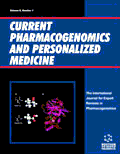
Full text loading...
We use cookies to track usage and preferences.I Understand
Polycystic Ovary Syndrome (PCOS) is a condition affecting women of reproductive age, characterized by a heterogeneous array of symptoms. This study aims to examine the role of Precision and Personalized Medicine (PPM) in managing PCOS, given the diverse manifestations of the disease and any genetic factors involved. In this review, we have analyzed the existing literature on the heterogeneity in PCOS symptoms, efforts to acquire PPM data for the characterization of molecular changes in PCOS, and the impact of advances in artificial intelligence on precision medicine. PCOS symptoms present differently in each individual, making traditional therapies ineffective. By tailoring treatment to each individual's genetic and molecular profile, PPM offers a promising approach to address the complex nature of PCOS. Understanding PCOS molecular underpinnings requires continuous acquisition of PPM data. Advances in artificial intelligence have greatly enhanced precision medicine's potential applications. Precision medicine could become a standard component of PCOS care, similar to its application in treating serious conditions like cancer and heart disease, due to its ability to address the condition's complexity through individualized treatment approaches.

Article metrics loading...

Full text loading...
References


